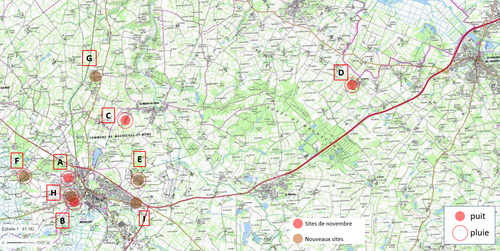Use the drop-down summary to access the articles in the folder.
Terms of republication
You can republish this article for free on your website, blog, etc.
Behind the scenes of research
The QUEPEP project was structured around two sampling and measurement campaigns, in autumn 2021 and spring 2022, in private gardens in the commune of Machecoul-Saint-Même and the surrounding area. In total, nine sites were evaluated (eight wells and one pond) for several families of contaminants: metals, anions, cations and pesticides, plus perfluorooctanoic acid (PFOA) and phtalates during the second measurement campaign.
1 to 15 compounds detected
The samples taken revealed several contaminants. On average, five compounds were identified in the well water samples and 12 in rainwater. The compounds most frequently found in rainwater included several herbicides: glyphosate and the subproduct aminomethylphosphonic acid (AMPA), sulfosate, S-métolachlore and propyzamide. The results also tested positive for the fungicide prothioconazole-desthio.
In certain areas, these samples also showed levels above the authorised thresholds, specifically for metolachlor, prothioconazole-desthio and PFOA. The study also highlighted seasonal variations in the presence of these pesticides in the commune’s water.
Use of the water in question
Alongside the samples taken, questionnaires were submitted to the commune’s residents in order to better understand their use of mains, well and rainwater. There is little data on domestic uses of water, particularly in small towns. According to the responses gathered, the vast majority of Machecoul residents have traditional uses for their water, split between several activities: gardening, consumption and hygiene. In general, well water was reserved for gardening and mains water for consumption and hygiene.

![[Translate to English:] Licence creative commons BY-SA 4.0 [Translate to English:] Licence creative commons BY-SA 4.0](https://reflexscience.univ-gustave-eiffel.fr/fileadmin/ReflexScience/Accueil/Logos/CCbySA.png)